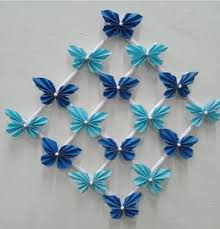Crafting Creativity: Exploring the Art of Handmade Excellence

The Art of Craft: Celebrating Creativity and Skill
Craft is a timeless art form that celebrates the marriage of creativity and skill. From intricate handwoven textiles to meticulously carved wooden sculptures, craft encompasses a wide range of disciplines that require dedication, patience, and a keen eye for detail.
One of the defining characteristics of craft is its emphasis on craftsmanship. Craftsmen and women dedicate countless hours honing their skills, mastering techniques passed down through generations. Each piece crafted is a labour of love, reflecting the artisan’s passion for their work.
At its core, craft is about more than just creating beautiful objects. It is a form of self-expression, a way for artisans to communicate their unique perspective and vision with the world. Whether it’s through pottery, jewellery making, or glassblowing, craft allows individuals to leave their mark on the world in a tangible way.
Furthermore, craft plays an essential role in preserving cultural heritage. Many traditional craft techniques are deeply rooted in history and tradition, serving as a link to our past. By continuing these practices, artisans help keep ancient traditions alive for future generations to appreciate and learn from.
As we celebrate the art of craft, let us recognise the dedication and skill that goes into each handmade creation. Whether you’re a seasoned artisan or simply an admirer of beautiful craftsmanship, take a moment to appreciate the artistry and passion that define the world of craft.
The Significance of Craft in Contemporary Culture
Embarking on a Handicraft Journey: Tips for Beginners
4. Exploring the World of Handicrafts
- What is craft?
- Why is craft important?
- How can I learn a craft?
- What are some popular types of crafts?
- Is craft considered art?
What is craft?
Craft is a multifaceted art form that encompasses a diverse range of creative disciplines rooted in tradition and skill. At its essence, craft involves the meticulous creation of handmade objects using techniques passed down through generations. From intricate embroidery to delicate pottery, craft embodies the fusion of creativity and expertise, resulting in unique and often functional pieces that reflect the artisan’s dedication to their craft. It is a form of artistic expression that honours heritage, celebrates individuality, and invites us to appreciate the beauty of handmade creations in a world filled with mass-produced goods.
Why is craft important?
Craft is important for a multitude of reasons, as it serves as a testament to human creativity, skill, and cultural heritage. Through the art of craft, individuals can express their unique perspectives and stories in tangible forms, creating connections with both the past and the present. Craft also plays a vital role in preserving traditional techniques and knowledge that have been passed down through generations, ensuring that these valuable skills are not lost to time. Additionally, craft allows for the creation of objects that hold personal meaning and significance, enriching our lives with beauty and artistry. In essence, craft is not just about making things; it is about celebrating craftsmanship, fostering creativity, and honouring the rich tapestry of human culture.
How can I learn a craft?
Learning a craft is a rewarding journey that offers the opportunity to explore your creativity and develop new skills. To embark on this enriching path, there are various avenues you can explore. Consider enrolling in local workshops or classes where experienced artisans can guide you through the fundamentals of your chosen craft. Online tutorials and resources also provide a convenient way to learn at your own pace from the comfort of your home. Additionally, don’t underestimate the value of practice and experimentation – hands-on experience is key to mastering any craft. Remember, learning a craft is not just about acquiring technical skills; it’s about embracing the process, nurturing your passion, and allowing yourself the freedom to create with joy and curiosity.
What are some popular types of crafts?
There is a diverse array of popular types of crafts that cater to a wide range of interests and creative preferences. Some well-loved categories include textile crafts such as knitting, crocheting, and embroidery, which allow for intricate patterns and designs to be woven into fabric. Additionally, paper crafts like origami and scrapbooking offer endless possibilities for creating unique pieces using paper as the primary medium. Other popular types of crafts include jewellery making, pottery, woodworking, and candle making, each offering a distinct avenue for artistic expression and hands-on creativity. Whether you’re drawn to traditional techniques or modern innovations, the world of crafts offers something for everyone to explore and enjoy.
Is craft considered art?
The question of whether craft is considered art is a topic that sparks lively debate within creative circles. While art and craft share common elements such as creativity and skill, they are often viewed through different lenses. Some argue that craft, with its emphasis on traditional techniques and functional objects, falls under a separate category from fine art. Others believe that the distinction between art and craft is arbitrary, with both forms of expression deserving recognition and appreciation. Ultimately, the relationship between craft and art is complex and subjective, with each individual interpreting their significance in their own unique way.
Tags: art form, artistic expression, beauty, craft, craftsmanship, creativity, creativity development, cultural significance, expertise, handmade objects, heritage, human creativity, knowledge preservation, personal meaning, skill, tradition, traditional techniques